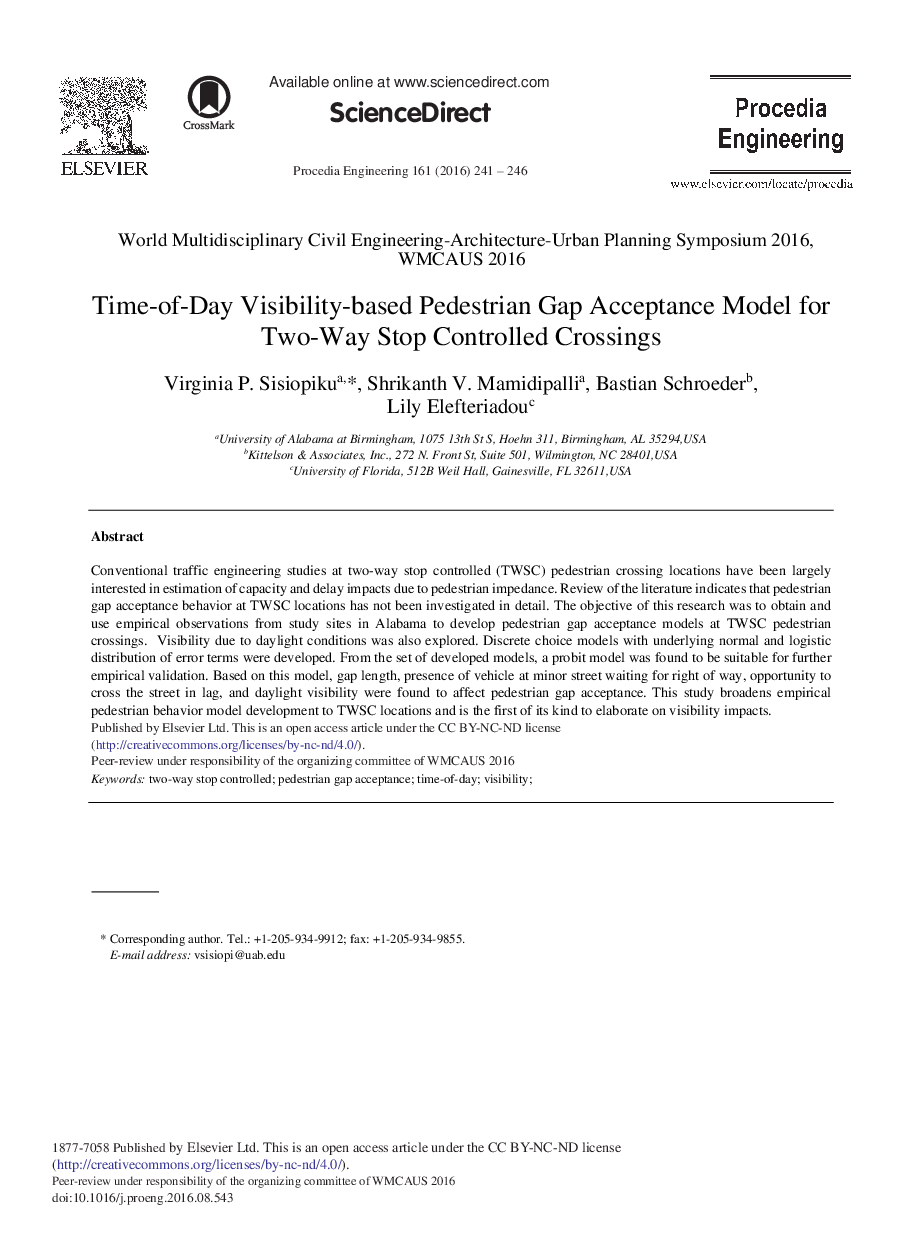| Article ID | Journal | Published Year | Pages | File Type |
|---|---|---|---|---|
| 5029741 | Procedia Engineering | 2016 | 6 Pages |
Conventional traffic engineering studies at two-way stop controlled (TWSC) pedestrian crossing locations have been largely interested in estimation of capacity and delay impacts due to pedestrian impedance. Review of the literature indicates that pedestrian gap acceptance behavior at TWSC locations has not been investigated in detail. The objective of this research was to obtain and use empirical observations from study sites in Alabama to develop pedestrian gap acceptance models at TWSC pedestrian crossings. Visibility due to daylight conditions was also explored. Discrete choice models with underlying normal and logistic distribution of error terms were developed. From the set of developed models, a probit model was found to be suitable for further empirical validation. Based on this model, gap length, presence of vehicle at minor street waiting for right of way, opportunity to cross the street in lag, and daylight visibility were found to affect pedestrian gap acceptance. This study broadens empirical pedestrian behavior model development to TWSC locations and is the first of its kind to elaborate on visibility impacts.
